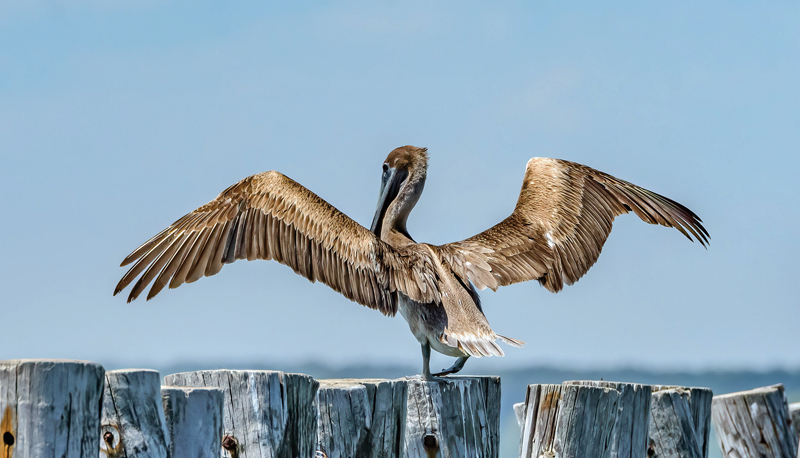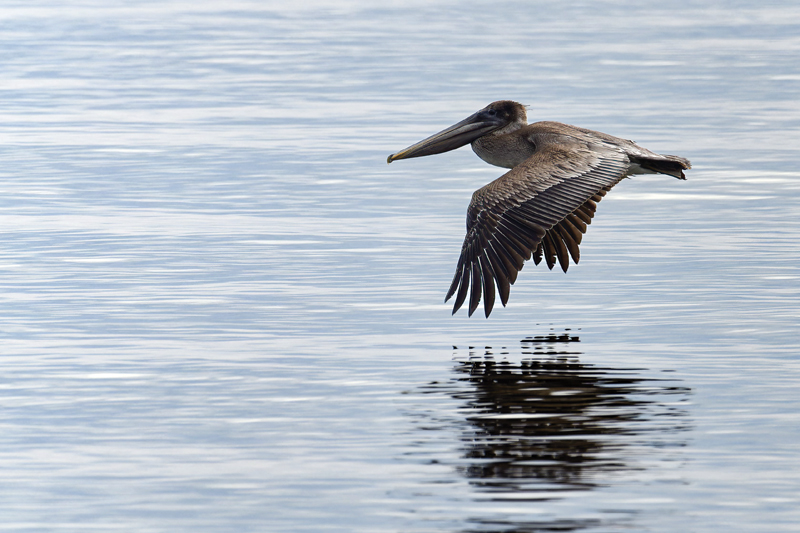Sailors may spot pelicans summering on the Chesapeake.
All sailors love a good limerick, and this one about pelicans was probably the first (and most PG rated) one that I learned from my Florida snowbird grandfather:
“There once was a bird called the pelican, whose beak can hold more than his belly-can; he can hold in his beak enough food for a week, but I don’t know how in the hell-he-can.”

My first brown pelican memories stem from visiting my grandparents in Florida. Watching them glide with their wingtips a feather’s breadth above the water remains a favorite pastime on ocean beaches. As an Annapolis native, I certainly don’t remember them on the Chesapeake Bay. Last week one of my students, who knows I love birds, reported that she had seen a brown pelican on the Upper Chesapeake Bay.
Much has changed in the distribution and abundance of brown pelicans (Pelicanus occidentalis) since my childhood weekend sailing adventures on the Bay in the 1970s. Once abundant in the southeast, the impacts from the pesticide DDT led to brown pelicans listing as an Endangered Species in 1970. DDT accumulated in the tissues of fish and led to a weakening of the eggshells in fish-consuming bird species such as brown pelicans, bald eagles, and osprey. DDT was banned in 1972, and brown pelicans were removed from the Endangered Species List in 1985, a conservation success story. The first breeding pair appeared in the Chesapeake Bay in 1987. As of 2022 there were 2500 nesting pairs in the Lower Bay.

Arriving from as far south as Cuba, the brown pelicans nest on Bay islands by mid-April. Islands provide protection from predator species such as raccoons. Brown pelicans are colonial nesters, frequently sharing nest sites with double crested cormorants. While they prefer ground nests, they will build a nest up higher in bushes or trees for safety reasons. Both parents incubate the white eggs for 30-36 days. Young are born naked and blind and are fed by regurgitation.
With a wingspan of six feet and a weight of eight to 10 pounds, brown pelicans would be eye-catching without their very distinctive beak and unique pouch. They prey upon menhaden, herring, sheepshead, and silversides. With their excellent eyesight they can spot fish from 70 feet above the surface. After plunge diving, their pouch acts like a dip net holding up to three gallons of water. When they surface, the pouch drains as they tilt their heads back to swallow the fish.
Pelicans also have large webbed feet and are proficient swimmers. Young pelicans can swim before they can fly. Pelicans can eat up to four pounds of fish per day, which sounds as if it should be enough food for a week!
By Pamela Tenner Kellett
Send your pelican photos to [email protected].




